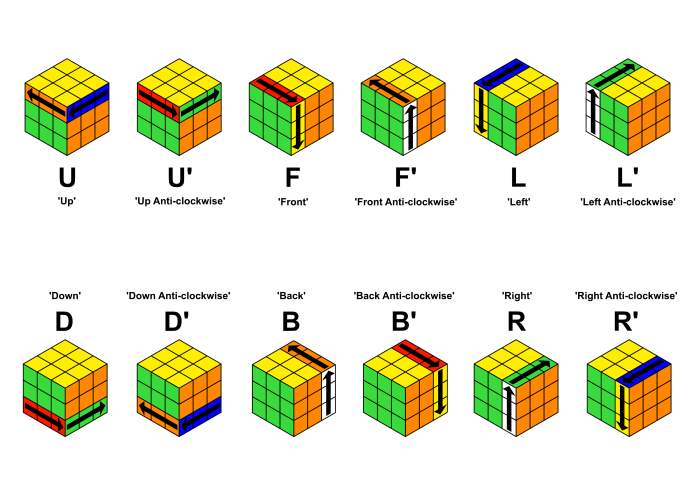Embark on a captivating journey into the world of g r a d u a l unscramble, where the art of deciphering scrambled words and phrases becomes a thrilling adventure. Dive into a comprehensive exploration of techniques, strategies, and applications, unlocking the secrets of this intriguing practice.
From identifying patterns to managing complexity, this guide empowers you with the knowledge and skills to conquer the challenges of gradual unscrambling. Prepare to be amazed as we unveil the fascinating applications of this technique in education, research, and entertainment.
Gradual Unscrambling Techniques
Gradual unscrambling is a technique for solving scrambled words or phrases by systematically rearranging the letters until the correct order is found. It involves a step-by-step approach that can be applied to words of any length or complexity.
Gradual unscramble is a great way to improve your problem-solving skills. It can also be a fun way to pass the time. If you’re looking for a challenge, try unscramble the queen of the south oes: queen of the south oes . This puzzle is sure to keep you entertained for hours.
Once you’ve solved it, you can try your hand at other gradual unscramble puzzles.
There are several different approaches to gradual unscrambling, each with its own benefits and limitations. Some of the most common techniques include:
Brute-force Approach
The brute-force approach involves trying every possible combination of letters until the correct order is found. This method is simple to implement, but it can be very time-consuming, especially for longer words or phrases.
Frequency Analysis
Frequency analysis involves analyzing the frequency of occurrence of different letters in the scrambled word or phrase. This information can be used to identify potential starting points or to eliminate certain combinations of letters.
Pattern Recognition
Pattern recognition involves looking for patterns in the scrambled word or phrase that can provide clues to the correct order of the letters. This method can be particularly effective for words or phrases that contain repeated letters or common letter combinations.
Dictionary Lookup
Dictionary lookup involves using a dictionary to check if any of the possible combinations of letters form a valid word. This method can be very effective for short words or phrases, but it can be less useful for longer words or phrases that contain multiple possible combinations of letters.
Methods for Identifying Patterns: G R A D U A L Unscramble

Pattern identification plays a pivotal role in successful word or phrase unscrambling. Here are some effective methods:
One common technique involves analyzing the length and structure of the scrambled words. By determining the number of letters and their potential arrangement, you can eliminate improbable combinations and narrow down the possibilities.
Letter Frequency Analysis
Studying the frequency of letters within the scrambled word can provide valuable insights. Certain letters, such as vowels (A, E, I, O, U) and common consonants (T, N, R, S), tend to appear more frequently in English words. Identifying these frequently occurring letters can serve as a starting point for unscrambling.
Strategies for Managing Complexity
Unscrambling complex words or phrases can be daunting, but with the right strategies, it becomes manageable. Breaking down the task into smaller units is key. Let’s explore some effective approaches:
Identify Patterns
Look for patterns within the scrambled word or phrase. Vowels often cluster together, while consonants tend to alternate. Identifying these patterns can provide clues to the correct arrangement of letters.
Break into Syllables
If the word is long, break it into syllables. This makes it easier to unscramble each syllable individually, then reassemble them to form the complete word.
Use Word Roots and Suffixes
Identify the word’s root (the base form) and any suffixes or prefixes. This can help you eliminate incorrect letter combinations and narrow down the possibilities.
Applications of Gradual Unscrambling
Gradual unscrambling has a wide range of applications across various fields, including education, research, and entertainment.
In education, gradual unscrambling can be used to teach problem-solving skills, critical thinking, and logical reasoning. By gradually revealing information or clues, educators can guide students through complex concepts and help them develop their ability to solve problems incrementally.
Research
In research, gradual unscrambling can be used to analyze large datasets, identify patterns, and develop models. By breaking down complex data into smaller, more manageable chunks, researchers can gain insights that would not be possible if they attempted to analyze the entire dataset at once.
Entertainment
In entertainment, gradual unscrambling can be used to create suspense, build anticipation, and engage audiences. This technique is often used in games, puzzles, and mystery novels to keep readers or players guessing and coming back for more.
Tools and Resources for Gradual Unscrambling

To assist in the gradual unscrambling process, various tools and resources are available. These tools offer a range of features and benefits, making them valuable aids for individuals and organizations seeking to untangle complex problems and achieve successful outcomes.
Tools for Identifying Patterns
- Pattern Recognition Software:These tools employ advanced algorithms to identify patterns and relationships within large datasets, aiding in the discovery of hidden insights and anomalies.
- Data Visualization Tools:By visually representing data, these tools facilitate the identification of patterns and trends, enabling users to gain a deeper understanding of the data and its underlying relationships.
- Statistical Analysis Tools:These tools provide statistical techniques for analyzing data, identifying correlations, and drawing inferences, which can assist in the identification of patterns and the development of hypotheses.
Tools for Managing Complexity
- Project Management Software:These tools assist in organizing and managing complex projects, breaking them down into smaller, manageable tasks and facilitating collaboration among team members.
- Collaboration Platforms:These platforms provide a centralized space for teams to share ideas, discuss solutions, and work together effectively, enhancing communication and knowledge sharing.
- Decision Support Systems:These systems combine data analysis, modeling, and optimization techniques to provide decision-makers with insights and recommendations, aiding in the evaluation of alternatives and the selection of optimal solutions.
Resources for Gradual Unscrambling
- Online Courses and Tutorials:Numerous online platforms offer courses and tutorials on gradual unscrambling techniques, providing step-by-step guidance and practical exercises.
- Books and Publications:Several books and academic publications delve into the theory and practice of gradual unscrambling, offering valuable insights and best practices.
- Community Forums and Discussion Groups:Online forums and discussion groups provide a platform for individuals to connect with others, share experiences, and seek advice on gradual unscrambling.
Best Practices for Gradual Unscrambling
Establishing best practices for effective gradual unscrambling is crucial for ensuring accuracy and efficiency. Here are some tips and tricks to consider:
It’s essential to start with a clear understanding of the task at hand. Identify the goal of the unscrambling process and the specific requirements that need to be met.
Tips for Improving Accuracy and Efficiency
- Break Down the Task:Divide the unscrambling process into smaller, manageable steps. This makes it easier to focus on one aspect at a time and reduces the risk of errors.
- Use a Systematic Approach:Follow a consistent process for unscrambling each item. This ensures that all items are treated fairly and reduces the likelihood of overlooking any important details.
- Verify Your Results:Once you have unscrambled an item, take the time to verify your results. This can be done by checking against a known solution or by using a different unscrambling method.
- Learn from Your Mistakes:If you make a mistake, don’t be discouraged. Use it as an opportunity to learn and improve your unscrambling skills.
Common Pitfalls to Avoid, G r a d u a l unscramble
- Rushing the Process:Unscrambling can be a time-consuming process, but it’s important to avoid rushing through it. Taking your time and being thorough will help you to avoid errors.
- Getting Discouraged:Unscrambling can be challenging, especially for complex items. If you get discouraged, take a break and come back to it later. Don’t give up!
- Ignoring Context:When unscrambling, it’s important to consider the context of the item. This will help you to make more informed decisions about the order of the letters.
Questions Often Asked
What is the most effective approach to gradual unscrambling?
The most effective approach varies depending on the complexity of the puzzle. However, starting with shorter words or phrases and gradually progressing to more challenging ones can build confidence and improve skills.
How can I improve my pattern recognition skills for gradual unscrambling?
Practice regularly, analyze common letter combinations, and pay attention to the frequency of certain letters within words. This will enhance your ability to identify patterns and make informed guesses.
What are some practical applications of gradual unscrambling?
Gradual unscrambling finds applications in education, research, and entertainment. It can improve vocabulary, enhance problem-solving abilities, and provide a fun and engaging way to exercise the mind.